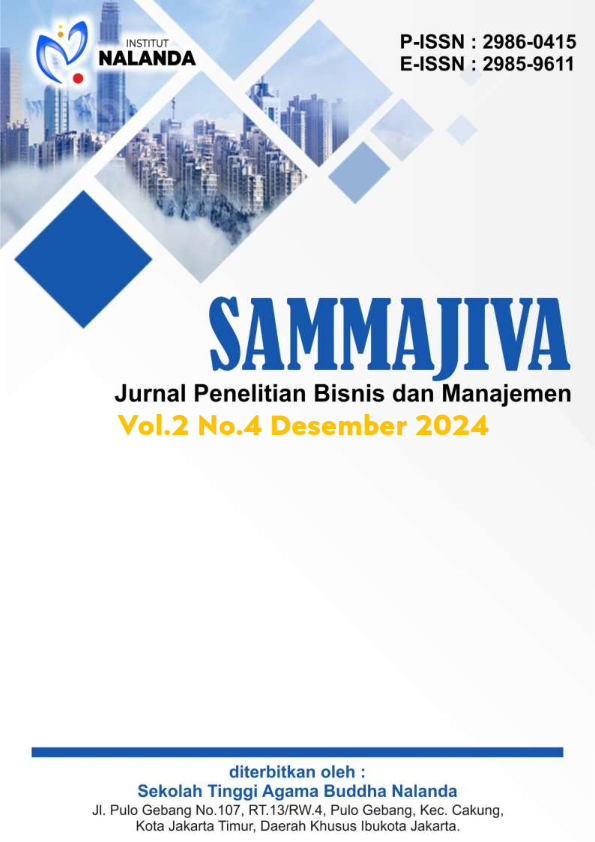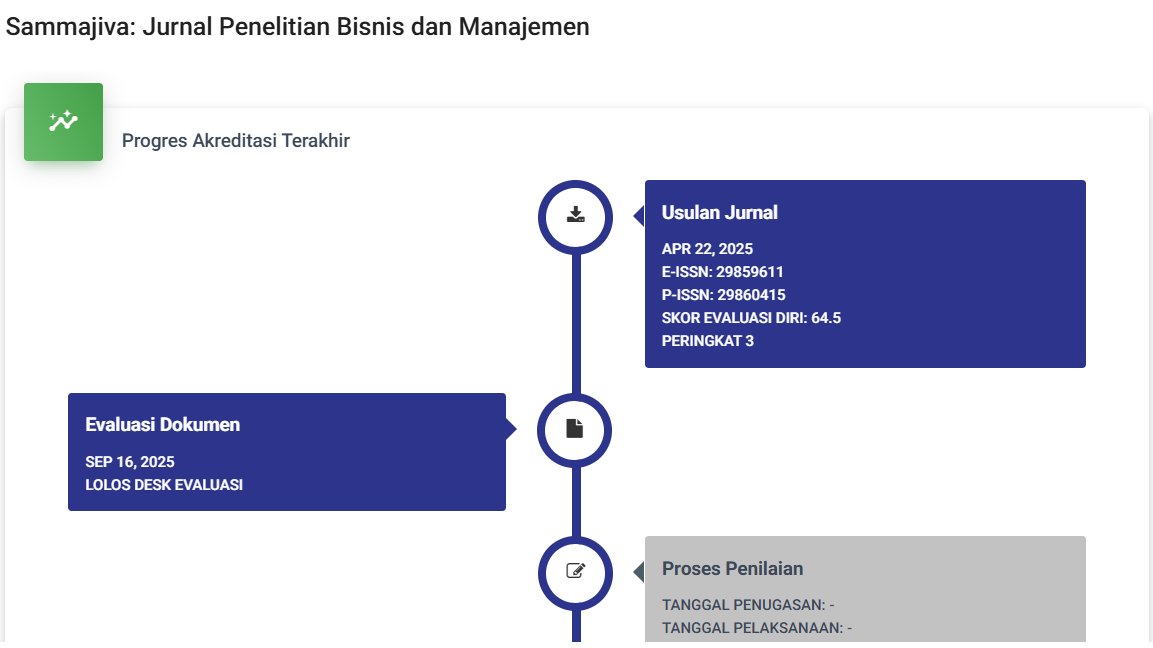Pengaruh Budaya Organisasi Terhadap Kinerja Pegawai pada Dinas Perkebunan dan Peternakan Kabupaten Paser
DOI:
https://doi.org/10.47861/sammajiva.v2i4.1602Keywords:
Organizational Culture, Performance, EmployeesAbstract
The aim of this research is to determine the influence of organizational culture on employee performance and the number of respondents was 51 respondents. Employees as samples in this study were given a questionnaire consisting of 32 statements. Responses to the questionnaire were tested for validity and reliability before multiple linear regression analysis was carried out. The results of testing the research instrument, namely the questionnaire, show that 32 questions are valid because rcount > rtable. Apart from that, all statements are reliable because the Cronbach Alpha value is > 0.06 (0.963 > 0.06) and is in the good category. The regression equation obtained is Y = -0.081 + 0.670 + 0.853 + 1.791 - 0.036 – 0.158 – 0.512 – 1.573. The multiple correlation coefficient value is 0.971, which means the correlation between Innovation and Risk Taking (X1), Paying Attention to Details (X2), Results Orientation (X3), People Orientation (X4), Team Orientation (X5), Aggressiveness (X6), Stability (X7) influence Employee Performance (Y) at the Paser Regency Plantation and Livestock Service. The coefficient of determination value is 0.935, meaning that the variables Innovation and Risk Taking (X1), Paying Attention to Details (X2), Results Orientation (X3), People Orientation (X4), Team Orientation (X5), Aggressiveness (X6), Stability (X7) have an influence on Employee Performance (Y) at the Paser Regency Plantation and Livestock Service by 93.5% while the rest is explained by other factors not researched at (100–93.5)% = 6.5%. Simultaneous testing of the F test shows that if Ha is accepted and H0 is rejected, the value obtained is 103.109 > 2.23, this Fcount>Ftable shows that Organizational Culture (X) which consists of Innovation and risk taking (X1), Paying attention to details (X2), Results orientation (X3), People orientation (X4), Team orientation (X5), Aggressiveness (X6), Stability (X7), together (simultaneously) have a significant influence significant to Employee Performance (Y). Next, partial testing was carried out, namely the t test was used. The t test was carried out to compare the tcount test value with the ttable test. If tcount>ttable then H0 is rejected. Ha is accepted, meaning that there is an influence between the independent variable and the dependent variable. Meanwhile, if tcount < ttable then H0 is accepted and Ha is rejected, meaning that there is no influence between the independent variable and the dependent variable. From the test it can be concluded that the variable Paying Attention to Detail (X2) has a dominant influence on Employee Performance (Y) at the Paser Regency Plantation and Livestock Service. With a tcount value of 5.503 which is the highest tcount value when compared with the tcount values of other variables and a significance level of 0.000.
References
Abubakar. (2021). Pengantar metodologi penelitian. SUKA-Press UIN Sunan Kalijaga.
Andzar. (2019). Pengaruh budaya organisasi terhadap kinerja pegawai negeri sipil pada Dinas Perindustrian Perdagangan dan Koperasi dan Usaha Kecil Menengah Kabupaten Paser. STIE Widya Praja Tanah Grogot.
Aziz. (2020). Pengaruh budaya organisasi terhadap kinerja produktivitas kerja karyawan Departemen Plant di Perseroan Terbatas Pamapersada Nusantara Distrik Kideco Kecamatan Batu Sopang [Skripsi]. STIE Widya Praja Tanah Grogot.
Busro. (2018). Teori-teori manajemen sumber daya manusia. PrenadaMedia Group.
Hasibuan. (2013). Manajemen sumber daya manusia. Bumi Aksara.
Hasibuan. (2019). Manajemen: Dasar, pengertian, dan masalah. Bumi Aksara.
Mangkunegara. (2017). Manajemen sumber daya perusahaan. Remaja Rosdakarya.
Parera. (2020). Dasar-dasar manajemen. Bumi Aksara.
Priyatno, D. (2010). Paham analisa statistik data dengan SPSS. Media Kom.
Rukajat, A. (2018). Pendekatan penelitian kuantitatif (quantitative research). CV. Budi Utama.
Sedarmayanti. (2009). Sumber daya manusia dan produktivitas kerja. Mandar Maju.
Sugiyono. (2022). Metode penelitian kuantitatif, kualitatif, dan R&D. Alfabeta.
Suwarto, F. X., & Koeshartono, D. (2009). Budaya organisasi: Kajian konsep dan implementasi. Universitas Atma Jaya Yogyakarta.
Tika, M. P. (2012). Budaya organisasi dan peningkatan kinerja perusahaan. Bumi Aksara.
Wibowo. (2016). Budaya organisasi (Cetakan ke-4). Rajawali Pers.








